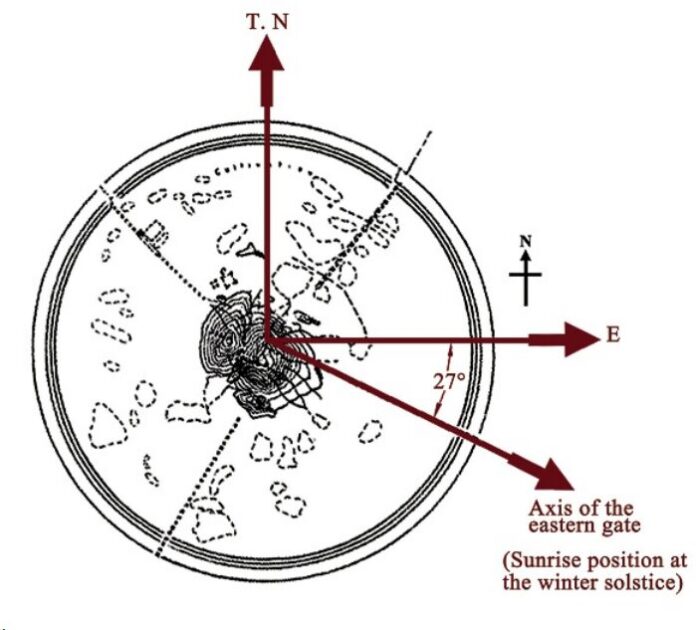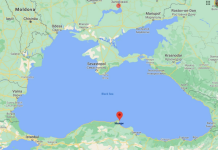The city of Darabgerd was one of the most famous of the Persian cities. Its ruins are located 9 km southwest of the modern town of Darab in Fars province, Iran. According to the AncientPages.com, a legend ascribes the foundation of the city to Darius the Great (550–486 BC), the third king of the Persian Achaemenid Empire (550–330 BC). (It is the same Darius who attacked Scythians in the area of present-day Ukraine and had to flee as a result of it). The place’s earlier name was Darabgerd (Daráb-gerd (Darius-town or the land of Darius). Darabgerd “might have been the first circular structure built by the third king of the Empire and is among old Persian cities having a circular plan and four gates’.
Recent research has established that Darabgerd’s four gates were not located on perpendicular axes as is depicted in Aurel Stein’s map (title image). According to this map, the axis of the eastern gate has a 27-degree declination with respect to the East. The geographic coordinates of the eastern gate are 28.69 degrees North Latitude and 54.49 degrees East Longitude. At this latitude, the ortive amplitude angle at winter solstice is about -27 degrees and during the sunrise at winter solstice, the sun was radiating light directly at the middle of the eastern gate.
Ardashir I (father of Shapur I) was a commander in Daragberd before becoming the founder of the Sasanid Empire in the third century A.D. The capital of his new empire, the circular city of Gur resembled the design of Darabgerd. It was discussed in the earlier articles. Dietrich Huff of the German Archaeological Institute established that at the time of winter solstice, the sun was radiating light directly through the middle of its eastern gate as well. During the 2006 season of excavations by a joint Irano-German team headed by Huff at the city of Gur, an adobe structure was discovered which was identified as an observatory. The structure included 12 adobe low-heightened rectangular cubic platforms, laid out in two rows within a circular hole. The direction and the length of the rectangular cubes were found to be parallel to the direction of the sunrise during the Equinoxes as well as the summer solstice. The length and direction of their shades made it possible to recognize the beginning of each of the 12 months.
But there was a predecessor to both Gur and Darabgerd – the circular city of Balkh. Since the city was situated to the north of the previous two, the axis of its eastern gate was 30 degrees lower than the direction of the East, and as with the previous two examples, at the winter solstice, the sun was rising exactly in front of it. According to Wikipedia, the city of Balkh, situated in northern Afghanistan dates to the 15th century B.C. and was the capital of the Bactrian Empire.
“For a long time, the city and country was the central seat of the dualistic Zoroastrian religion, the founder of which, Zoroaster, died within the walls according to the Persian poet Ferdowsi. Armenian sources state that the Arsacid dynasty of the Parthian Empire established its capital in Balkh. There is a long-standing tradition that an ancient shrine of Anahita was to be found here, a temple so rich it invited plunder. Alexander the Great married Roxana of Bactria after killing the king of Balkh. The city was the capital of the Greco-Bactrian Kingdom and was besieged for three years by the Seleucid Empire (208–206 BC). After the demise of the Greco-Bactrian kingdom, it was ruled by Indo-Scythians, Parthians, Indo-Parthians, Kushan Empire, Indo-Sassanids, Kidarites, Hephthalite Empire and Sassanid Persians before the arrival of the Arabs.”
< Ancient sources on who founded the Bactrian and Parthian empires
Some little-known information about European Sctythians and the Persian Empire in the “Royal Scythia, Greece, Kyiv Rus” book.










